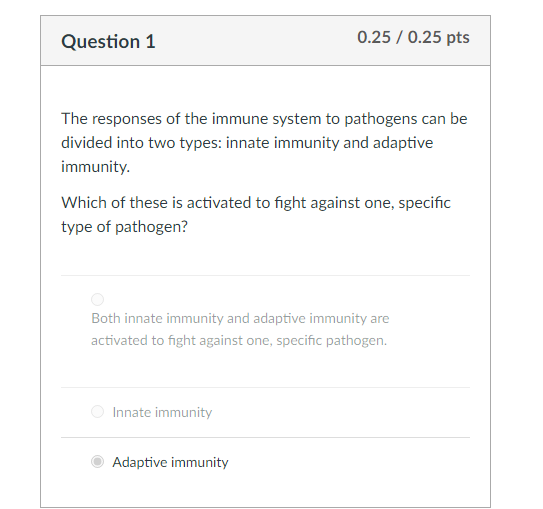Online Homework 17-Immunity
Which of these is activated to fight against one, specific type of pathogen?
Which of the following is true about how these harmless microorganisms block infection by pathogens?
Which of the following list are TRUE about these phagocytes? (Check ALL that apply)
Which of the following is true about cell-mediated immunity?(Check all that apply).
Which of these cells suppress the immune system in order to make sure that the immune system does not respond to “self” molecules present on normal, uninfected cells?
more quickly and makes more antibodies that the first time it saw the virus, even if it is many years later.
Which of the following are examples of passive immunity? (Check ALL that apply)
Which of the following are examples of natural immunity? (Check ALL that apply)
Answer Preview-Online Homework 17-Immunity-BIOL-107

